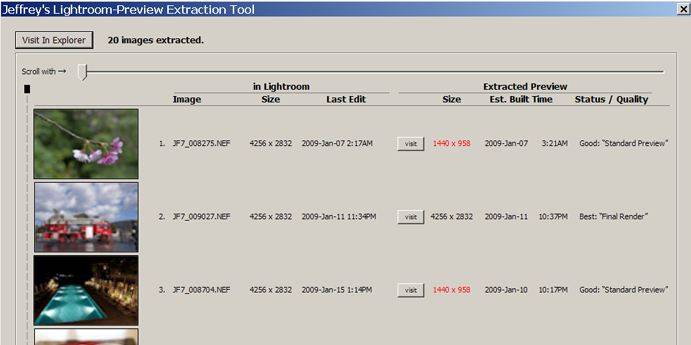 Hopefully most of you will never need this post, because you have an effective backup strategy, that backs up both your Lightroom catalog and your image files. I have written about this in the following posts:
Hopefully most of you will never need this post, because you have an effective backup strategy, that backs up both your Lightroom catalog and your image files. I have written about this in the following posts:
Avoiding Lightroom-Generated Headaches and Heart Attacks
I Would Cry If I Lost the Work I Did Today: How to Back Up Your Lightroom Photo Library
But what if you did not read these, and really do lose your image files? (Perhaps you mistakenly thought that you could delete the original image files because you thought that Lightroom had its own copy, or you did not back up your image files and lost them in a crash.) If you still have your catalog, meaning that Lightroom opens successfully and you can see image previews, but they have question marks, you can probably recover something.
Before I get into what and how, let me say that most times users have question marks on photos and folders, it is not because they have truly lost their images — it is because they have moved, renamed or deleted them outside of Lightroom. Here’s a post on why question marks occur and how to resolve them.
But if you truly have lost them, there is some hope to get back something — at best, full-size jpeg copies of your files. Lightroom stores up to three jpeg copies of your photos behind the scenes. It stores a little thumbnail jpeg, which you see in Grid View in the Library Module or in the filmstrip, it stores a standard, or screen-sized preview, that you see in Loupe View in the Library Module (and the output modules), and it can store a full-size, 1:1 jpeg copy of your image file. The fact that Lightroom stores these jpeg copies (that on the surface we are not usually even aware of) is what allows us to see all of our photos almost instantly when we open Lightroom, and as we move from task to task. Whether Lightroom has all three of these jpeg copies for any one of your photos will depend — on how you set your import settings and your preferences, and what you have done with your photos (for example, zooming in on a photo causes Lightroom to create the 1:1 preview if you hadn’t done so during import). Bottom line, you have lost your photos, so the idea is to get the best jpeg preview copy available.
So how do you recover these previews?
They live in a Previews database in your Lightroom catalog folder — but they are not directly accessible to you. Fortunately, Jeffrey Friedl, a talented and prolific Lightroom plug-in author, has just released the Lightroom 4 version of his Preview Extractor Plugin. Jeffrey has released this Lightroom plug-in completely free of charge to help those in dire distress, but donations are appreciated (and I think very much warranted, if he helps you to recover!) You will find instructions at the link above.
Do check out Jeffrey’s other Lightroom plug-ins on his blog!

